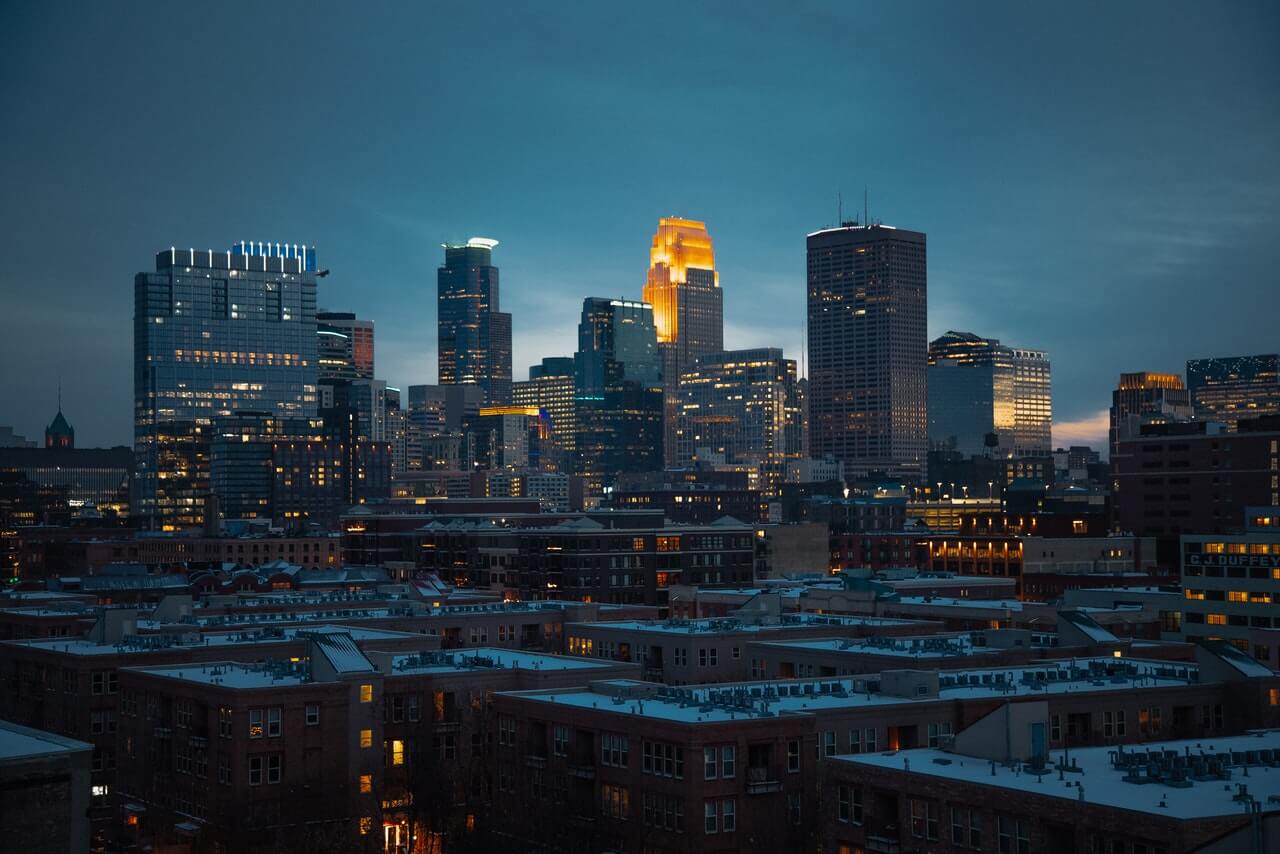奥巴马总统在安赛乐米塔尔集团克利夫兰钢铁厂的演讲
THE PRESIDENT: Hello, Ohio! (Applause.) It is good to be backin Cleveland. The last time I was herewas about a year ago, in the final days of the campaign. I know how much you miss hearing how Iapprove this message every night on your TV. (Laughter.) I will say it is niceto be here when the only real battle for Ohio is the Browns-Bengals game thisSunday. (Applause.) He’s got the Browns shirt right here, Brownscap. (Laughter.)
I want to thank Scotty for thatterrific introduction. Give him a biground of applause. (Applause.) He is a natural. I want to thank your CEO, Lakshmi Mittal, forinvesting in America and the Cleveland area. We appreciate him. (Applause.) And I want to thankall of you for having me here today.
Along with me, there are a coupleof people I just want to acknowledge. First of all, America’s Secretary of Energy, Ernie Moniz, is here. Right there. (Applause.) And CongresswomanMarcy Kaptur is here. Give Marcy a biground of applause. (Applause.) Fighting for working people every day.
And earlier this afternoon I hada chance to see your mayor, Frank Jackson; your county executive, EdFitzGerald. And even though they’re nothere, I want to thank them for the great work they’re doing on behalf ofworking people throughout the region. (Applause.)
And then, finally, I want tothank Mark and Gary for showing me one of the biggest steel plants inAmerica. And they told me that folks areproud to have been making steel right here for a century -- 100 years -- righthere. (Applause.) And they explained that, today, the steel youmake in Cleveland is some of the strongest you’ll find anywhere in theworld. It’s one of the most productiveplants in the world. Best workers in theworld. (Applause.)
And what’s remarkable is, whenyou think about it, go back to where this plant was just a few years ago. The economy was in free fall, auto industryon the brink of collapse. And that meantdemand for steel had dried up. The blastfurnaces went quiet. About 1,200steelworkers punched out for what might have been the last time. And that all came at the end of a decade whenthe middle class was already working harder and harder just to get by, andnearly one in three American manufacturing jobs had vanished -- a lot of themgoing overseas. And that could havedevastated this community for good.
But we rolled up our sleeves, wemade some tough choices. We rescued andretooled the American auto industry; it saved more than a million jobs. We bet on American ingenuity and Americanworkers. (Applause.) And assembly lines started humming again, andautomakers started to make cars again. And just a few months after this plant shutdown, your plant manager got the call: Fire those furnaces back up, get those workers back on the job. And over the last four years, you’ve madeyourselves one of the most productive steel mills not just in America, but inthe world. In the world. (Applause.)
So you retooled to make thestronger steel that goes into newer, better American cars and trucks. You created new partnerships with schools andcommunity colleges to make sure that folks who work here have the high-techskills they need for the high-tech jobs -- because I was looking around thisfactory, and there’s a whole bunch of computer stuff going on.
One of your engineers -- and Iwant to make sure I get Margaret’s name right here -- Margaret Krolikowski. Did I get that right, Margaret? (Applause.) Where’s Margaret? Where isshe? There is she is, back there. So I’m going to quote you -- I’m going toquote you. Here’s what Margaretsaid: “When we came back, we wanted tomake sure we were in a position where we never shut down again.” Never shut down again. And that means making sure that workers hereare constantly upgrading their skills and investments being made in thestate-of-the-art technology.
And it was interesting, when Iwas meeting a number of the folks who were giving me the tour -- folks who havebeen here 30 years, 40 years -- but obviously the plant has changed, and soduring that period they’ve had to upgrade their skills. And that’s what’s happened. And the story of this plant is the story ofAmerica over the last five years. Wehaven’t just been recovering from a crisis. What we’ve been trying to do is rebuild a new foundation for growth andprosperity to protect ourselves from future crises. And because of the grit and resilience andoptimism of the American people, we’re seeing comeback stories like yours allacross America.
Over the last 44 months, ourbusinesses have created 7.8 million new jobs. Last month, another 200,000 Americans went back to work. (Applause.) And a lot of those jobs are in manufacturing. So now we’ve got more work to do to get thoseengines of the economy churning even faster. But because we’ve been willing to do some hard things, not just kick thecan down the road, factories are reopening their doors, businesses are hiringnew workers, companies that were shipping jobs overseas, they’re starting totalk about bringing those jobs back to America. We’re starting to see that.
And let me give you an example,because we were talking about this -- Mr. Mittal and others were talking aboutwhat’s different now. Take a look atwhat we’ve done with American energy. For years, folks have talked about reducing our dependence on foreignoil -- but we didn’t really do it. Andwe were just importing more and more oil, sending more and more moneyoverseas. Gas prices keep on going upand up and up. We finally decided wewere going to do something about it.
So we invested in new Americantechnologies to reverse our addiction to foreign oil, double wind power, doublesolar power, produce more oil, produce more natural gas, and do it all in a waythat is actually bringing down some of our pollution, making our entire economymore energy-efficient. Today, we generatemore renewable energy than ever. Weproduce more natural gas than anybody in the world. Just yesterday, we learned that for the firsttime since 1995, the United States of America produces more of our own oil hereat home than we buy from other countries. First time since 1995. (Applause.) And that’s a big deal. That’s what America has done these past fiveyears.
And that is a huge competitiveadvantage for us. Part of the reasoncompanies now want to move -- we were just talking about it -- this plant, ifit’s located in Germany, energy costs are double, maybe triple; same inJapan. So this gives us a big edge. But this is also important: We reached the milestone not just because we’reproducing more energy, but also we’re wasting less energy. And this plant is a good example of it. We set new fuel standards that double thedistance our cars and trucks go on a gallon of gas by the middle of the nextdecade. That saves the average driver,everybody here, more than $8,000 at the pump over the life of a new car. You like that? (Applause.) We launched initiatives to put people to work upgrading our homes, andour businesses, and our factories so we’re wasting less energy. All that saves businesses money on theirenergy bills. Your plant is one of thehundreds to answer that call. And if you’resaving money on energy costs, that means you can invest in equipment, invest inworkers, hire more people, produce more products.
And here’s another thing: Between more clean energy, less wastedenergy, the carbon pollution that’s helping to warm the planet, that actuallystarts going down. And that’s good newsfor anybody who cares about leaving a planet to our kids that is as beautifulas the one we got from our parents and our grandparents. (Applause.) So it’s a win-win. Our economykeeps growing, creating new jobs, which means that strengthening our energysecurity and increasing energy efficiency doesn’t have to be a choice betweenthe environment and the economy -- we can do both.
So we’ve tackled the way we useenergy. That’s making America morecompetitive in order to attract good jobs. We’ve also tackled our deficits. A lot of people have been concerned about deficits. Since I took office, we cut them inhalf. That makes America more attractivewhen it comes to business investment decisions.
And we’ve tackled a broken healthcare system. Obviously, we’re not doneyet. (Applause.) Obviously, we’re not done yet. But over the last three years, health carecosts have grown at the slowest pace on record. And this is a great place to work thanks to a great steelworkers unionand cooperation between management and labor. (Applause.) But just keep in mindthat if businesses’ health care costs are growing at about one-third the ratethat they were a decade ago, that makes America a more affordable place to dobusiness, and it also means that the investors here, if they’re putting lessmoney into health care costs, they can put more money in terms of hiring moreworkers and making sure that they’re getting good pay.
So that’s what all these toughdecisions are about: Reversing theforces that have hurt the middle class for a long, long time, and building aneconomy where anybody, if you work hard, you can get ahead. That’s what plants like this have always beenabout. It’s not that it’s easywork. But it means if you work hard, you’vegot a chance to buy a home, you’ve got a chance to retire, you’ve got a chanceto send your kids to school, you have a chance to maybe take a little vacationonce in a while. That’s what peoplestrive for. And that’s what will makethe 21st century an American century, just like the last century was.
But I didn’t run for President togo back to where we were. I want us togo forward. I want us to go towards thefuture. (Applause.) I want us to get us to where we need tobe. I want to solve problems, not justput them off. I want to solveproblems. And we’ve got to do more tocreate more good, middle-class jobs like the ones folks have here.
That means we’ve got to doeverything we can to prepare our children and our workers for the competitionthat they’re going to face. We should bedoing everything we can to help put some sort of advanced education withinreach for more young people. Noteverybody has got to go to a four-year college, but just looking at theequipment around here, you’ve got to have a little bit of advancedtraining. It may come through acommunity college or it may come through a technical school, but we’ve got tomake sure you can get that education, your kids can get that education withoutgoing broke -- without going broke, without going into debt. (Applause.) So we’re working on that.
Another thing we should beworking on: Fixing a broken immigrationsystem. (Applause.) When you think about this whole region, a lotof folks forget, but almost everybody who worked in that plant 100 years agocame from someplace else. And so we’vegot now a new generation of hopeful, striving immigrants; we’ve got to makesure that they come legally and that we do what we need to secure our borders,but we’ve also got to make sure that we’re providing them opportunity just likeyour parents, grandparents, great-grandparents received when they arrived atthis plant. And that’s important. (Applause.) And, by the way, it will help our economy grow because then they’repaying taxes and helping to invest and build here in America.
We should do everything we can torevitalize American manufacturing. Manufacturing is -- that’s the hub of our economy. When our manufacturing base is strong, theentire economy is strong. A lot ofservice jobs depend on servicing manufacturing jobs. And, typically, manufacturing jobs pay alittle bit better. So that’s been apath, a ticket to the middle class. Sowhen we make steel and cars, make them here in America, that helps. Like I said, the work may be hard but itgives you enough money to buy a home and raise a kid, retire and send your kidsto school.
And those kinds of jobs also tellus something else. It’s not just howmuch you get in your paycheck, it’s also a sense of, “I’m making something andI’m helping to build this country.” Ithelps establish a sense of -- that we’re invested in this country. (Applause.) It tells us what we’re worth as a community. One of your coworkers, Mike Longa -- where’sMike?
AUDIENCE MEMBER: Back here.
THE PRESIDENT: Is he back here? That’s Mike right there. Mike grew up here. His mom and dad worked at this plant. This plant helped put Mike and four brothersand/or sisters through college. And oncethis plant started growing again, Mike got his chance to be a steelworker here,and provide for his own two young kids. So it’s a generational thing, and I want to keep that going.
In my State of the Union address,I talked about how we created America’s first manufacturing innovationinstitute right here in Ohio. MarcyKaptur has been a big proponent of this, because she knows how importantmanufacturing is. I want to create moreof them -- places where businesses are working with universities and they’repartnering to figure out what are the new manufacturing techniques that keep usat the cutting edge so that China or Germany don’t get ahead of us in terms ofthe equipment that’s being invested. Wewant to be at the cutting edge, so what we’re producing is always the beststeel, it’s always the best cars. Butthat requires research and investment.
And your Senator, Sherrod Brown,helped us to create that first manufacturing hub in Youngstown. And he’s now leading a bipartisan effort --(applause) -- he’s now leading a bipartisan effort with Senator Blunt ofMissouri to move more of these manufacturing innovation hubs all across thecountry. And Congress should passSherrod’s bill. We should be doingeverything we can to guarantee the next revolution in manufacturing happensright here in Cuyahoga, happens right here in Ohio, happens right here inAmerica. (Applause.)
And let me make one lastpoint. We have to do everything we canto make sure every American has access to quality, affordable health care,period. (Applause.) You may have read we had some problems lastmonth with websites. I’m not happy aboutthat. And then I had a press conferencetoday and I said, you know what, we fumbled the ball in terms of the rollout.
But we always knew this was goingto be hard. There’s a reason why folkshad tried to do it for 100 years and hadn’t done it. And it’s complicated. There are a lot of players involved. The status quo is entrenched. And so, yes, there’s no question the rollouton the Affordable Care Act was much tougher than we expected. But I want everybody here to understand, I amgoing to see this through. (Applause.) I want millions of Americans to make surethat they’re not going broke when they get sick and they can go to a doctorwhen their kids get sick. And we’re notapologizing for that. We are going toget this done. (Applause.)
So we’re going to get the websiteworking the way it’s supposed to. Theplans are already out there that are affordable and people can get taxcredits. We’re going to help folks whoseold plans have been canceled by the insurers -- many of them weren’t very good-- and we’re going to make sure that they can get newer, better options.
But we’re not going to go back tothe old system, because the old system was broken. And every year, thousands of Americans wouldget dropped from coverage or denied their medical history or exposed tofinancial ruin. You guys are lucky thatyou work at a company with a strong union that gives you good healthbenefits. (Applause.) But you know friends and family members whodon’t have it, and you know what it’s like when they get sick. You know how scary it is for them when theyget sick. Or some of them have healthinsurance -- they think they do -- and they get sick, and suddenly theinsurance company says, oh, I’m sorry, you owe $50,000. That’s not covered. Or they jack up your premium so you can’tafford it because you had some sort of preexisting condition. That happens every day.
So we’re not going to let thathappen. We’re not going to let folks whopay their premiums on time get jerked around. And we’re not going to walk away from the 40 million Americans withouthealth insurance. (Applause.) We are not going to gut this law. We will fix what needs to be fixed, but we’regoing to make the Affordable Care Act work. And those who say they’re opposed to it and can’t offer a solution, we’llpush back. (Applause.)
I got to give your Governor alittle bit of credit. John Kasich, alongwith a lot of state legislators who are here today, they expanded Medicaidunder the Affordable Care Act. And thinkabout that. Just that one step means asmany as 275,000 Ohioans are going to have health insurance. And it doesn’t depend on a website. That’s already happening because of theAffordable Care Act. (Applause.)
And I think it’s fair to say thatthe Governor didn’t do it because he just loves me so much. (Laughter.) We don’t agree on much, but he saw, well, this makes sense -- why wouldn’twe do this? Why wouldn’t we make surethat hundreds of thousands of people right here in Ohio have somesecurity? It was the right thing todo. And, by the way, if every Republicangovernor did what Kasich did here rather than play politics about it, you’dhave another 5.4 million Americans who could get access to health care nextyear, regardless of what happens with the website. That’s their decision not to do it. And it’s the wrong decision. They’ve got to go ahead and sign folks up.
So the bottom line is sometimeswe just have to set aside the politics and focus on what’s good forpeople. What’s good to grow our middleclass? What’s going to help keep planslike this growing? What’s going to makesure we’re putting more people back to work? What’s going to really make a difference in terms of our kids getting agreat education?
And, look, we’ve done itbefore. That’s the good news. The good news is that America is -- look, wemake mistakes. We have ourdifferences. Our politics get screwed upsometimes. Websites don’t worksometimes. (Laughter.) But we just keep going. We didn’t become the greatest nation on Earthby accident. We did it because we didwhat it took to make sure our families could succeed, make sure our businessescould succeed, make sure our communities could succeed. And if you don’t believe me, listen to one ofyour coworkers.
So Sherrod Brown, earlier thisyear, brought a special guest along with him to the State of the Union address-- one of your coworkers, Cookie Hall. Where’s Cookie? Is Cookie here?
AUDIENCE MEMBER: No, she’s back at the hall.
THE PRESIDENT: She’s back at the hall working. (Laughter.) Well, let me say something nice about her behind her back. (Laughter.) So Cookie said, one of -- let me make sure I can find this. She said -- that night she said, “If I get achance to meet President Obama, I’ll tell him my greatest pride is in our 2012production record at Cleveland Works. We’rethe most productive steelworkers in the world.” (Applause.) More than a ton ofsteel produced for every single one of the workers at this plant. That’s pretty good. That’s pretty good. (Applause.)
So all of you are an example ofwhat we do when we put our minds to it. This plant was closed for a while. We go through hard times. And alot of our friends are still going through hard times. But when we work at it, we know we can get toa better place, and we can restore some security to a middle class that wasforged in plants just like this one, and keep giving ladders of opportunity forfolks who were willing to work hard to get into the middle class. That’s what I’m about. That’s what this plant is about. I’m proud to be with you.
And as long as I have the honorof being your President, I’m going to be waking up every single day thinkingabout how I can keep on helping folks like the ones who work in thisplant. (Applause.)
God bless you. Thank you. God bless you, and God bless the United States of America. Thank you.
NSDA“SDcamps”全国英语演讲与辩论大赛(大学组)/SDcamps全国中小学生英语演讲与辩论大会(中小学及幼儿组)/美式辩论赛(以下简称大赛/大会)现诚招全国省市合作伙伴或城市合伙人,共同进行推广NSDA赛事品牌、举办赛事及培训活动、开展素质教育、美式营地项目等多方面合作。
我们希望认同NSDA理念,有赛事组织经验,或有教育资源,特别是有理想有热情的机构或个人一起携手,共同推广NSDA品牌、赛事及素质教育。以机构的形式,或以城市合伙人的方式均可。具体的赛事组织、盈利模式,欢迎电话或微信咨询。
微信:0012133598196



